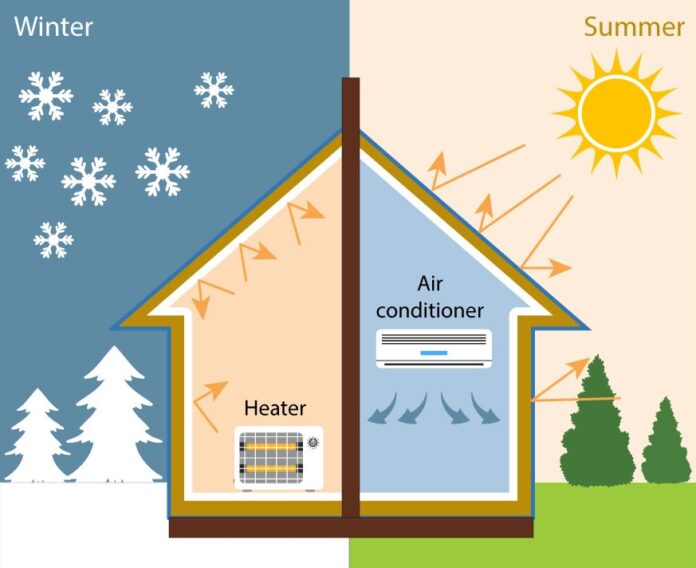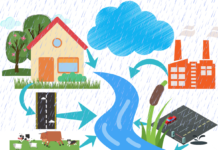As a homeowner, I am always on the lookout for ways to save money on my energy bills. One of the most effective ways to do this is by ensuring that my home is properly insulated.
In this article, I will explain how insulation works, the importance of insulation for energy efficiency, the types of insulation materials available, factors to consider when choosing insulation, signs that your home needs more insulation, the benefits of proper insulation, and the cost of insulation and potential savings on energy bills.
How Insulation Works
Insulation is a material that is designed to prevent the transfer of heat from one area to another. In a home, insulation is typically installed in the walls, floors, and ceilings to prevent heat from escaping during the winter and entering during the summer. Insulation works by trapping pockets of air within its structure, which helps to slow down the transfer of heat. The more effective the insulation, the more air pockets it contains.
There are several different types of insulation available, including batts and rolls, blown-in, and spray foam. The type of insulation that is best for your home will depend on a variety of factors, including the climate in your area, the age of your home, and the type of construction. You can learn more about insulation types and installation from SHABL.
The Importance of Insulation for Energy Efficiency
Insulation is critical for energy efficiency because it helps to reduce the amount of energy needed to heat or cool your home. Without proper insulation, heat can escape through the walls, floors, and ceilings, which means that your heating system will have to work harder to maintain a comfortable temperature. In the summer, heat from outside can enter your home through the same areas, which means that your air conditioning system will have to work harder to keep your home cool.
By properly insulating your home, you can reduce your energy consumption and save money on your energy bills. In fact, the U.S. Department of Energy estimates that homeowners can save up to 20% on their heating and cooling costs by properly insulating their homes.
Types of Insulation Materials
There are several different types of insulation materials available, each with their own advantages and disadvantages. The most common types of insulation materials include fiberglass, cellulose, spray foam, and rigid foam.
Fiberglass insulation is the most common type of insulation and is typically made from recycled glass. It is easy to install and is relatively inexpensive, but it can be itchy and can lose its effectiveness over time.
Cellulose insulation is made from recycled paper and is treated with fire retardant to prevent it from catching fire. It is more expensive than fiberglass insulation, but it is more effective at reducing air leaks.
Spray foam insulation is a more expensive option, but it is also the most effective at reducing air leaks. It is made from a liquid that expands when it is sprayed, filling in all of the gaps and cracks in the walls, floors, and ceilings.
Rigid foam insulation is a type of insulation that is made from polystyrene or polyurethane. It is more expensive than fiberglass or cellulose insulation, but it is also more effective at reducing air leaks.
Factors to Consider When Choosing Insulation
When choosing insulation for your home, there are several factors to consider. The first is the R-value, which is a measure of the insulation’s ability to resist heat flow. The higher the R-value, the more effective the insulation will be.
Another factor to consider is the type of insulation material. As mentioned earlier, there are several different types of insulation materials available, each with their own advantages and disadvantages.
Finally, you should consider the climate in your area, as well as the age and type of construction of your home. Homes in colder climates will require more insulation than homes in warmer climates, and older homes may require additional insulation to meet current building codes.
Signs That Your Home Needs More Insulation
There are several signs that your home may need more insulation. The first is if your energy bills are higher than they should be. This could be a sign that your heating or cooling system is working harder than it needs to in order to maintain a comfortable temperature.
Another sign is if your home is drafty or if you can feel cold air coming in through the walls, floors, or ceilings. This could be a sign that your insulation is not effective at preventing air leaks.
Finally, you may need more insulation if your home is older and has not been updated in several years. Building codes have changed over time, and older homes may not have enough insulation to meet current standards.
Benefits of Proper Insulation
Proper insulation has several benefits for homeowners. The first is that it can help to reduce energy consumption and save money on energy bills. By reducing the amount of energy needed to heat or cool a home, homeowners can save up to 20% on their energy bills.
Another benefit is that proper insulation can help to create a more comfortable living environment. By reducing drafts and preventing hot or cold spots, insulation can help to create a more consistent temperature throughout the home.
Finally, proper insulation can help to reduce noise pollution from outside. Insulation can help to absorb sound, making it a great choice for homes located in noisy areas.
Cost of Insulation and Potential Savings on Energy Bills
The cost of insulation will vary depending on several factors, including the type of insulation, the size of your home, and the complexity of the installation. On average, homeowners can expect to spend between $1,000 and $3,000 on insulation.
While the upfront cost of insulation may seem high, the potential savings on energy bills can make it a worthwhile investment. As mentioned earlier, homeowners can save up to 20% on their energy bills by properly insulating their homes. This means that the cost of insulation can be recouped in just a few years.
Conclusion
In conclusion, insulation is critical for energy efficiency in the home. By properly insulating your home, you can reduce your energy consumption, save money on your energy bills, and create a more comfortable living environment. When choosing insulation for your home, it is important to consider the R-value, the type of insulation material, and the climate in your area. If you are unsure whether your home needs more insulation, look for signs like high energy bills or drafts and consult with a professional. By investing in proper insulation, you can enjoy the benefits for years to come.


















